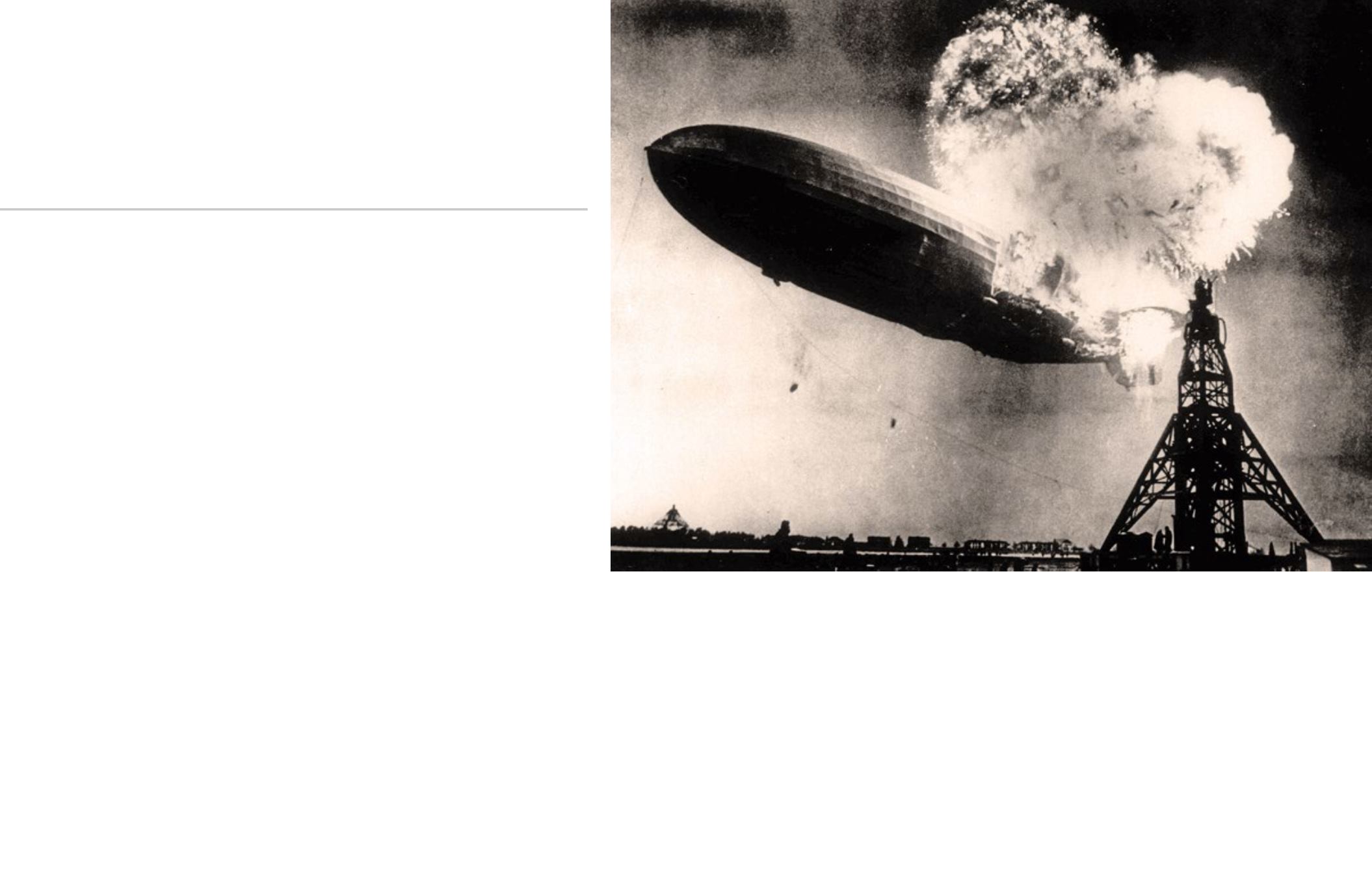
PROUD MEMORIES OF DAD...
AND A
HISTORIC EVENT
by Kate Hofstetter
Nine year old Bruce Reichelderfer
watched from his front porch with awe
and admiration, as the huge, beautiful
ship prepared to moor at the Naval
base in Lakehurst, New Jersey. His
dad, Francis W Reichelderfer, executive
officer of the base, was packing and
would leave with the other passengers
and crew when the ship deported the
next morning for Frankfurt, Germany.
As the vessel approached, Bruce
was filled with a sense of pride. He’d
been aboard her with his father just
days earlier when the captain gave
officers on the base a courtesy cruise.
The ship was beautiful inside, Bruce
remembers. There was a dining room
with windows that gave you a panoramic
view of the harbor and a lounge where
adults could go for a drink. There
were 72 sleeping berths and even a
dance hall. It was German-built and an
impressive sight as he gazed upward at
its huge body. He longed to go with his
father.
The shipwas built in Friedrichshafen,
Germany and Bruce knew it was over
800 feet long and 130 feet in diameter.
He’d seen it with his dad when it
was just a huge skeleton, still under
construction.
Then he saw something he will never
forget. “It was a ball of fire,” he says ,
“just forward of the upper fin.” The fins
were near the rear of the ship. Next
came the glow of flames. He whirled on
his heels and ran to tell his father. The
Hindenburg
was on fire.
It was the evening of May 6, 1937.
As a ground crew waited to catch the
landing lines and anchor the airship, a
thunderstorm and shifting winds kept
the captain from docking on his first
attempt. Instead, he circled the base
and waited for the storm to subside.
On the second approach, he gave
the vessel full rudder as he went into
a series of turns, fighting the wind.
Although what exactly happened to
cause the
Hindenburg
to burst into
flames is still a mystery, most experts
today believe the hard turns the captain
made stressed the ship and may have
snapped a cable which allowed leakage
of hydrogen gas. They believe the ship
had picked up static electricity from the
surrounding thunderstorms.
Bruce is sure of what he saw. “It was
a ball of fire about 3 feet across,” he
says, “and the only thing that comes to
mind to describe it is St Elmo’s fire.”
St Elmo’s fire is a weather
phenomenon that often occurred on
the masts of ships or the wings of
planes during electrical storms. At first
glance, St Elmo’s fire appears to be
blue flames or a violet glow. It is not
actually fire and it has been mistaken
for ball lightening. Often accompanying
the glow is a distinct hissing or buzzing
sound. It can appear on leaves, grass
and even the tips of cattle horns.
According to an Online
encyclopedia, it is the
electric field surrounding
the object in question (in
this case the
Hindenburg
)
that causes ionization of
the air molecules. Roughly,
1000 volts per centimeter
induces St Elmo’s fire. The
mixture of nitrogen and
oxygen in our atmosphere
creates the glow, much
like a neon light.
Certainly,
with
an
electrical charge and a
hydrogen leak you could
expect disaster. Bruce
believes the wet landing
cables did not help
either, as they provided
a ground to complete the
electrical circuit. Cables,
he explained, were lowered from the
hull of the airship to a ground crew in
what was called a “high landing”. The
cable was then tethered to a winch
and the ship was lowered mechanically
from the ground. There is no doubt in
his mind that the storm was the culprit
in the tragedy that occurred that day
within view of his family’s quarters.
There were 97 people on board the
Hindenburg
when it was destroyed by
fire and 62 survived. Of course, there
were many serious injuries among the
survivors. Bruce remembers seeing
people jump from the wreckage to
escape burning to death.
“They landed on ballasts that had
fallen through the hull,” he said, “and
that cushioned their fall and saved
their lives.”
The ballasts, he explained were
filled with hundreds of gallons of water
and were used to trim the ship. In fact,
that eventful day in May three ballasts
were jettisoned in an attempt to take
weight off the rear of the vessel. The
captain had also ordered several crew
members to the nose of the airship to
redistribute weight as the nose of the
ship kept drifting upward. All those in
the nose of the aircraft perished in the
flames that day.
Dirigibles were a novel idea and
an engineering fete worth saluting,
however, what happened to the
Hindenburg
ended the era of “lighter-
than-air” ships. They were just too
sensitive to weather conditions. The
Hindenburg
was only one of several
disasters involving this type aircraft.
However, Bruce, like his father,
has been fascinated by these airships
all his life. The lighter-than-air craft or
dirigibles, are powered and steerable
(as opposed to balloons) and they
include three classifications: blimp,
such as the one owned by
Good Year
;
semi-rigid like the
Zeppelin
and rigid like
the
Hindenburg
. The shape of a blimp
is maintained by gas, such as helium.
The shape of the rigid
Hindenburg
was because of a full metal framework
while the semi-rigid craft typically has a
metal support that runs from the nose
to the tail internally.
Bruce’s fascination with dirigibles
was passed on to him by his father,
who was one of the few Americans ever
licensed to fly lighter-than-air craft. In
Discover Smith Mountain Lake
Fall 2013
39
38


